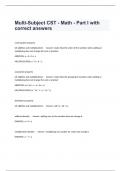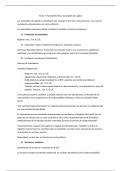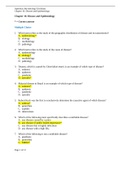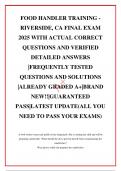By Close Analysis of Poetic Methods, and Drawing Upon Relevant
External Biographical Information, Compare and Contrast how Heaney
and Frost write about Death in “The Summer of Lost Rachel” and “Out,
Out-”
Frost explores the theme of death in “Out, Out-“, as does Heaney in
“The Summer of Lost Rachel". However, this is achieved in contrasting ways.
Heaney uses his title and structure to highlight the pain and loss of death.
“The Summer of Lost Rachel” is a euphemism, and this juxtaposes the
poignant descriptions of loss, such as the bitter tone created by the plosive
alliteration in “every berried briar”, in the rest of the poem. This heightens the
emotional effect on the reader, emphasising the harshness of grief that
accompanies death. Furthermore, the poem is made of nine quatrains,
symbolising the nine years of Rachel’s (Heaney’s niece) life before she was
killed. This structure creates a musical tone, emphasising the sense of grief.
Heaney has written an elegy to honour the dead girl and accentuate the pain
of her loss.
Contrastingly, Frost uses his structure in “Out, Out-“ to convey the
pragmatism of death to the reader. This is seen through his use of blank
verse, which creates a conversational tone for the reader. This implies an
unsentimental attitude towards death (vastly different from Heaney’s emotional
atmosphere). This is because Frost lived on a farm in rural New England, and
was exposed to death frequently. The poem is inspired by the brutal death of a
neighbour’s child, and Frost’s distance from the family allows him to give a
desensitised portrayal of death. The iambic pentameter used reflects the
rhythm of a heartbeat, signifying to the reader how life carries on after tragic
death. The title is an allusion to Shakespeare’s “Macbeth”, where Macbeth
discusses the brevity of life upon learning of his wife’s demise. This allows
Frost to reflect on death in a seemingly callous way, demonstrating how the
unyielding pursuit of success always leads to death.
Both poets emphasise the cruelty of untimely death by surrounding their
subjects with pathos. This is seen with Heaney in “Broke down last May when
we laid you out / In white, your whited face”. The repetition of “white” connotes
Rachel’s childhood innocence, evoking pity from the reader and accentuating
the tragedy of her death. Rachel was buried in her white First Communion
, dress, reiterating her youth. The metaphor “broke down” highlights the
outpouring of grief to the audience, underlining the devastation of her death.
The enjambement creates a flow throughout the poem, signifying Heany’s
emotional outpour to the reader and heightening the sadness of Rachel’s
death. This prompts sympathy from the reader.
Similarly, Frost presents his victim in a way that encourages empathy.
This is seen in “Call it a day, I wish…please the boy… big boy / Doing a man’s
work”. The use of the first person singular portrays the omniscient narrator’s
regret to the reader, creating pathos around the boy. The repetition of “boy”
throughout the poem emphasises his juvenility, imploring the audience to pity
him. The harsh plosive alliteration conveys a cynical tone to the reader,
highlighting the cruelty of his death. The juxtaposition between the youthful
connotations of “boy” and the maturity of “man” creates sympathy for the boy,
whilst also implying to the reader that the relentless pursuit of work can only
lead to suffering.
Additionally, Heaney and Frost use differing techniques to portray the
horror of premature death to the reader. Heaney achieves this in “Gashed
from the accident, but still / So absolutely still… twisted spokes all
straightened out, / The awful skid-marks gone.” From the emphatic verb
“gashed”, the reader infers a sense of Rachel’s vulnerability. This is supported
by the repetition of “still”, which highlights the sudden shock of her death to
the reader. The caesura creates a pause, heightening the speaker’s emotions
for the reader. The sibilance within this line creates a harsh atmosphere,
building tension to signify the horror Rachel’s death to the reader. The
repeated use of enjambement creates a fast pace, mirroring the quick shock
of death, and Heaney supports this with emotive language in “awful”. This
underlines the dreadful occurrence of death in the Heaney family.
Likewise, Frost displays the terror of youthful death in “Out, Out-“ with
“snarled and rattled… meeting. But the hand!… half as if to keep / The life
from spilling”. The onomatopoeia around the saw builds a foreboding tone,
foreshadowing tragedy to the reader. The caesura reflects the shift in tone
from fanciful whimsy to danger, showing the terror faced by the boy to the
reader. This is supported by the following exclamation, made of monosyllabic









